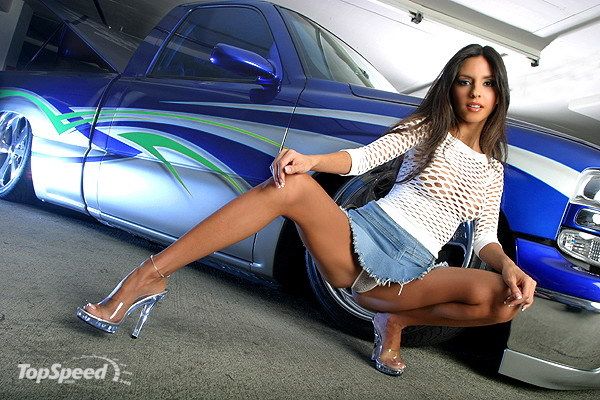
Shut your eyes and say the word "Suzuki" out loud. Unless you're a moto-head or one of those rare Geo Metro fanatics (they exist, trust us), the image that springs to mind isn't very nice. Odds are that the car your subconscious conjures is tiny, cheap and bizarre. It's probably named something forgettable like "Aerio" or totally inaccurate (and forgettable) like "Esteem." Forgettable cars tend to attract forgettable customers. Don't believe us? Suzuki referred to their recent crop of owners as "subprime." Ouch. But, with that pain comes some truth. And in an industry long known for complete and total self delusion, Suzuki's admission was cathartic across both sides of the automaker/auto journo aisle.
The Kizashi drives better than basically everything in its class.
But what would cause Suzuki to be so blunt? A number of factors, as it turns out. For one thing, "subprime" is so 2008. Meaning that relying on folks with poor credit to snap up your cars because they're so cheap just ain't good business these days. Nor is outsourcing big, potentially huge moneymakers like seven-passenger SUVs to General Motors. There's nothing inherently wrong with the XL7 other than the fact that it's based on the Theta platform, just like the (defunct) Pontiac Torrent and Saturn Vue. Smartly, Suzuki has indefinitely suspended XL7 production. More importantly, rather than not making bad cars, Suzuki might just be in the middle of a product renaissance.
Those familiar with the plucky little SX4 are well aware that it's a great driving, high content, practical hatch that's incredibly inexpensive (name another car featuring all-wheel drive and navigation for under $18,000). But you may not know the SX4 is half-Fiat, penned by none other than Giugiaro and half-designed by the Italian giant. So what Suzuki needs to really pull off a rebirth (or at least the early stages of a rebirth) is a fully 100% Suzuki-designed car that's not just "good enough," but "better than." And according to Suzuki, the all new 2010 Kizashi is indeed such a vehicle. But is it?
Tough to tell from the outside. While worlds better looking than all other U.S.-bound Suzuki vehicles (save the five-door SX4), the Kizashi is too derivative. Viewed head on, the hood looks lifted from a Chrysler PT Cruiser, the face is pure goatee-Volkswagen and the headlights appear to be Chrysler Sebring-y. None of the elements are particularly bad looking, but they aren't boat-floating either. Still, from certain angles, the Kizashi's grille is pretty assertive – just don't stare too hard for too long.

The side view is (again) middle-of-the-road and simply not novel, with the C-pillars coming from the Chevy Malibu and the long nose, short deck looking quite Mitsubishi Lancer-ish, if not outright Sebring. But it's not bad. The little trunk lid (don't be fooled, the trunk itself is big) is all Bangled up and again, neither bad nor good. The best part of the whole package is, without question, the well integrated twin chrome pipes. But don't look too close, as they're actually just exhaust surrounds (i.e. not actually connected to anything save the rear bumper). Size-wise, the Kizashi is shorter than the competition Suzuki thinks it'll being going up against – it's closer in length to a Jetta than a Passat. However, and we can only blame clever packaging here, the interior has enough room for four big adults, with a surprising amount of rear seat legroom. Go figure.
Inside, the Kizashi is pretty impressive – for a Suzuki. Meaning that yes, we've seen better, but we've seen much worse, too (again, see Sebring). For one thing, compared to the SX4, the Kizashi's cabin is modern and almost sophisticated. We can't say anything good about the tacky plastic plastered all over the dash, but the door inserts are soft and feel good against your skin. The steering wheel is compact, thick and firm – a great combo if you're into spirited driving. The center stack is elegant yet functional, almost like a cross between a Volvo and a Honda. The cloth seats in our test car were pretty enveloping, especially for a midsize family sedan – the three memory position driver's seat more so than the passenger's. And while the music Suzuki provided on our press trip was pretty damn awful, the 425-watt Rockford Fosgate stereo kicks and thumps with the best of 'em – no distortion to be had.




We elected to check out the six-speed manual Kizashi, but before we move on, your other transmission choice is a CVT with paddle shifters, providing six fake gears. You can get the CVT in front-wheel drive or all-wheel drive, but the 6MT only comes with FWD. Before you start bunching your panties, let's talk weight. The FWD 6MT Kizashi weighs in at a light 3,241 pounds. Add one hundred pounds for the CVT, and another one hundred pounds for the CVT with AWD. Not only that, but the clutch is Honda-light/easy to use. The shifter's okay, though a bit long to throw and a tad too sloppy. Still, it's world's more enjoyable than the CVT, thank you very much. We should note that the CVT with its endless gearing gets better mileage than the 6MT. 31 mpg highway vs. 29 mpg for the 6MT. City driving will net you around 23 mpg with the CVT, 20 mpg with the manual.
Under the hood is a 2.4-liter DOHC inline-four that stumps up 185 horsepower and 170 pound-feet of torque – though if you opt for the CVT transmission you only get 180 hp – yet another reason to row your own. Belying the power rating is the motor's readiness to rev. Redline is indicated at 6,500 RPM and fuel cutoff happens at about 6,750, but getting up into those lofty revs takes no time whatsoever. The motor just roars when you clobber the pedal. Compared to other four-cylinder engines in its class, the Kizashi's motor is straight-up stout. In a Nissan Altima you get 175 hp (though 180 lb-ft of torque). A Toyota Camry gives you 169 hp and 167 lb-ft of torque, though you can get a version of its 2.5-liter inline-four with 179 hp and 171 lb-ft of twist. Base Honda Accord? 177 horses and 161 torques. And just for giggles, Sebring? 177 hp and 166 lb-ft. Now, of course, all of those (larger) cars are available with a more powerful V6, and right now, the Kizashi isn't. And to that we say good.


That's right, good. Why? First off, the Kizashi can hit 60 mph in 7.5 seconds. Not breathtaking by any means, but fast enough. Second, we were able to flog the Kizashi not only on some fairly twisting roads around Chapel Hill, North Carolina, but on VIR – Virginia International Raceway. Talk about a brand reinvention. First of all, you could step into the springs Suzuki has perched under the front of the Kizashi. They are seriously massive – maybe eight inches in diameter. Then there's the KYB dampers at all four corners and the Akebono (the same folks who make stoppers for Japan's bullet trains) disc brakes fitted at each wheel. The front end enjoys a MacPherson setup while the rear features a fancy-considering-the-price 5-point multi-link setup. And while the Kizashi's chassis is fairly stiff, the body is even stiffer. As in rock hard (they let us bang on a body-in-white). This same formula – rigid body on top of a softer, more compliant suspension – is used by none other than the Rossion Q1. But why mention a mid-size family sedan in the same breath as a half-mental supercar? Unless...
No, the Kizashi isn't a supercar. Not even kinda. But the Kizashi is remarkably sporting, dare we say shockingly so. Because frankly, we were expecting some sort of already also-ran Camry competitor. Instead, Suzuki gifts the automotive world with an inexpensive five-seater than can embarrass cars costing 150% as much, if not more. The sticker for the Kizashi we tested came in right around $21,500 with 18-inch wheels and 235/45 tires. Check all the boxes and you're talking $26,750 for AWD, CVT, leather, navigation, etc. But back to the Kizashi showing up other, pricier cars.


The Kizashi drives better than basically everything in its class. Camry, Accord, Altima, Jetta, Malibu, Mazda6, Legacy – you name it. How? Well, unlike all of those cars that were engineered in focus groups, the Kizashi was tested on both Germany's Nürburgring and California's own Willow Springs. Overkill? Absolutely, but the Kizashi isn't like those other cars. In fact, Suzuki brought a selection of the competition down to VIR to let us drive them through a few obstacle courses back-to-back. The Altima felt like a dinosaur wearing cement shoes. We were worried the Mazda6 might scrape its door handles, while the Volkswagen CC – a car we really dig – seemed to weigh three tons. Even the Subaru Legacy felt full of lard by comparison – and it isn't. But let's not stop there.
There will absolutely be a V6 Kizashi, as well as a hybrid.
Suzuki thinks that people buying products like Much of the Kizashi's prowess comes down to its weight, or lack there of. When we got to the hot laps portion of the day, Suzuki was kind enough to stick us in a V6 Kizashi mule, with the 3.6-liter V6 from the XL7, just so we could see what a little more speed is like. As you might expect, the mule is much quicker off the line. Depending on how well you came out of Oak Tree turn, the 2.4-liter Kizashi was traveling at just over 100 MPH at the end of the straightaway. The V6 was moving about ten MPH faster. However, handling suffered. The suddenly nose-heavy car was simply not as eager to turn in, less able to dance. We tried the AWD CVT car on the track, too. While better than the V6 mule in terms of overall athleticism, our money's still on the six-speed, FWD Kizashi. And yes, there will absolutely be a V6 Kizashi down the road, as well as a hybrid.

Suzuki has done the seemingly impossible, almost willing themselves out of automotive irrelevance by producing a wonderful, desirable, actual driver's car. The Kizashi is the real deal and you can consider us thoroughly impressed. However – and this is a big however – what's next? It's not enough to just produce one great car then sit back on your laurels. You must be willing to follow through, to continue pushing against the edge of the envelope, to keep reinventing and improving your brand.
The Kizashi is a great first effort at distancing Suzuki from its recent subprime past. And going by nothing but the excitement on display from their marketing, engineering and PR staff over the two-day launch, Suzuki does seem on the cusp of something big. Maybe the most telling fact is this: Kizashi means, "A great thing coming." We'd say a great thing is already here, and we really hope Suzuki can keep it coming.
[Source: Autoblog]













0 comments:
Post a Comment